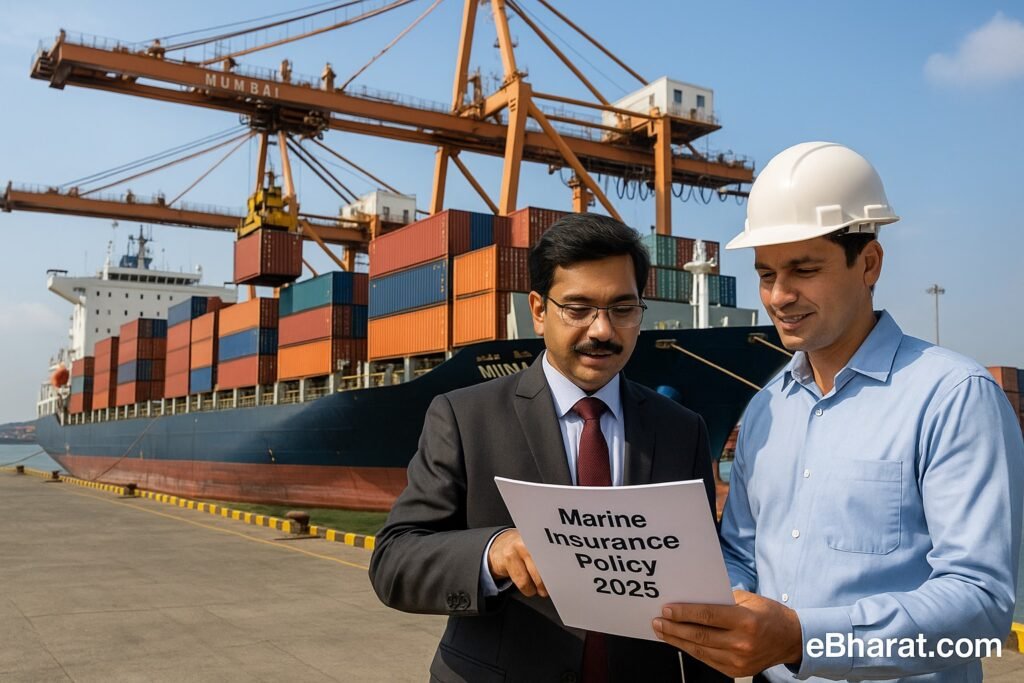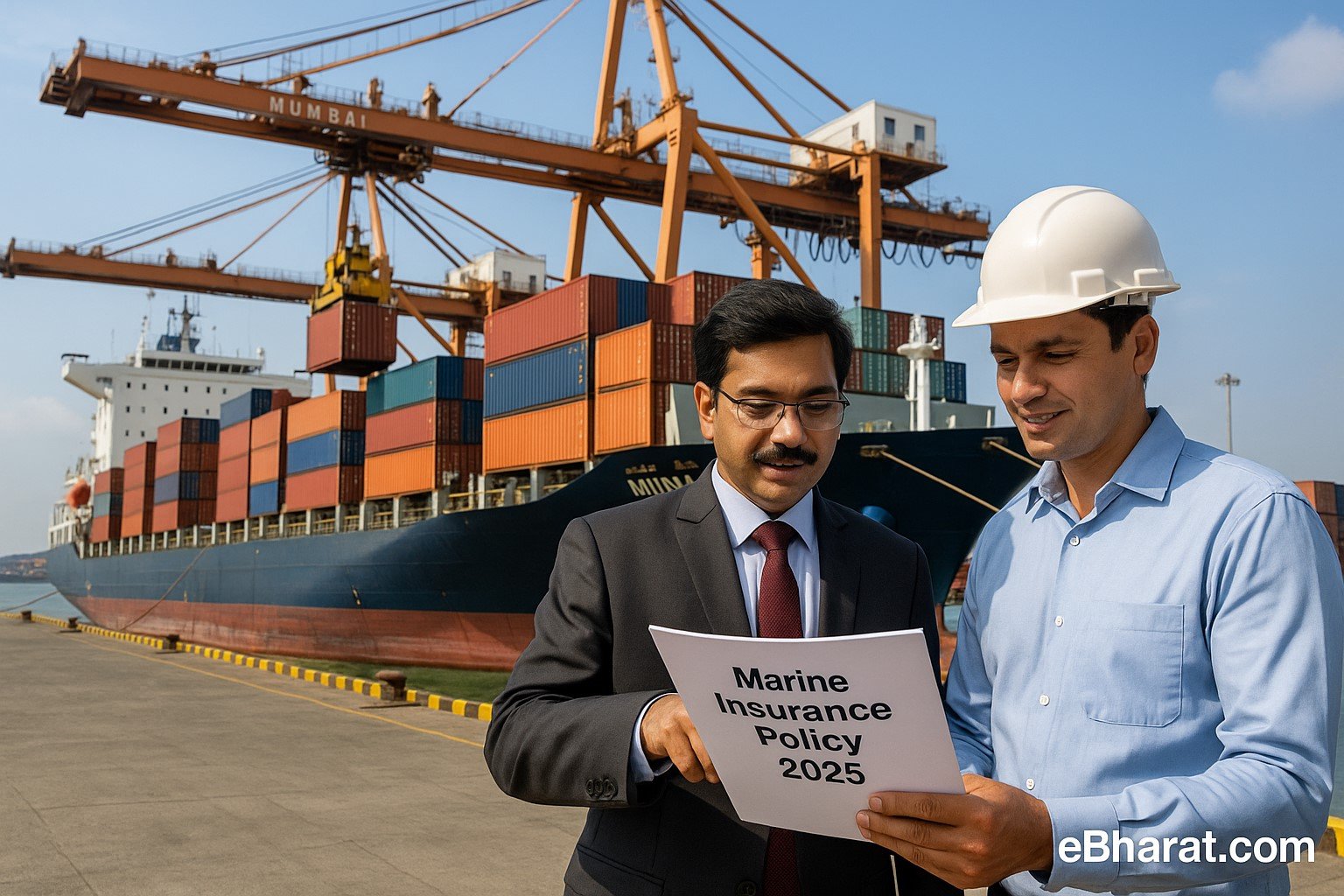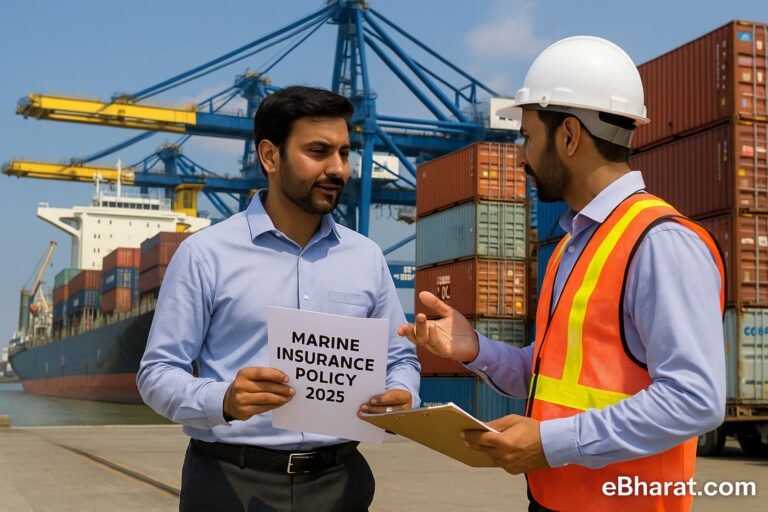
India is one of the fastest-growing trading nations in 2025, with exports crossing $450 billion and imports fueling industries from crude oil to electronics. But with global shipping delays, piracy risks, and natural calamities, goods in transit face massive risks.
Marine insurance is the key protection that exporters, importers, and logistics businesses rely on to cover financial losses during transit. This guide explains its basics, types, costs, and IRDAI’s 2025 guidelines.
What Is Marine Insurance?
Marine insurance covers the loss or damage of goods during transit—whether by sea, air, road, or rail.
It ensures:
- Exporters are protected against shipping risks.
- Importers don’t suffer heavy losses from cargo damage.
- Banks and customs authorities release shipments with financial security.
Types of Marine Insurance
- Marine Cargo Insurance
- Covers goods transported internationally or domestically.
- Risks: theft, fire, collision, sinking, natural disasters.
- Hull Insurance
- Covers the ship/vessel itself against damage or accidents.
- Freight Insurance
- Protects the shipping company’s freight income if goods are lost/damaged.
- Liability Insurance
- Covers legal liability of ship owners for third-party damages.
Coverage in Marine Insurance
- Natural Risks: Storms, floods, earthquakes.
- Man-Made Risks: Piracy, theft, fire, collision.
- Storage Risks: Coverage extends to warehouses in some policies.
- Transit Risks: Loading/unloading damages, accidents during road/rail movement.
Exclusions in Marine Insurance
- Delay in delivery without physical loss.
- Ordinary wear and tear of goods.
- Loss due to inadequate packaging.
- War and nuclear risks (unless add-ons are purchased).
Premium Costs in 2025
Marine insurance premiums depend on:
- Type of goods (electronics vs bulk commodities).
- Distance of shipment (domestic vs global).
- Mode of transport.
Average Rates:
- Domestic cargo: 0.05–0.2% of cargo value.
- International cargo: 0.2–0.5% of cargo value.
Example: A shipment worth ₹1 crore may cost only ₹20,000–₹50,000 to insure.
Case Example: Electronics Exporter in Mumbai
A Mumbai-based exporter shipped electronics worth ₹2 crore to Dubai. Due to rough seas, goods worth ₹30 lakh were damaged. His marine cargo policy covered the entire loss, saving his business from a financial disaster.
Why Exporters & Importers Must Have Marine Insurance
- Mandatory for Bank Loans & Customs – Most banks require insurance before financing exports.
- Safeguards Against Global Risks – Shipping disruptions are frequent in 2025.
- Builds Client Trust – International clients prefer insured suppliers.
- Cost-Effective Protection – Small premium compared to shipment value.
Quick Infobox: Marine Insurance Snapshot 2025
| Factor | Coverage |
|---|---|
| Goods in transit | ✔️ |
| Piracy, theft, fire | ✔️ |
| Inadequate packaging | ❌ Not covered |
| War/nuclear risks | ❌ Unless add-on |
| Average premium | 0.2–0.5% of cargo value |
Why This Matters
Global trade is the backbone of India’s economy, but risks during transit are unavoidable. With marine insurance, exporters and importers safeguard their shipments, finances, and credibility in the global market.
Next, read: Workmen’s Compensation Policies: How They Protect SMEs
🚀 Start Your Career as an HDFC Life Agent
Join eBharat’s Agent Network and get training, digital tools, and mentorship to build a successful career in insurance.
👉 Apply Now to Become an Agent












